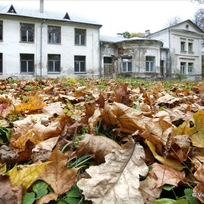It is believed that the Paneriai manor was founded in the 18th century by Simon Liudvikas Gutakovskis, the manager of the royal manor. After the collapse of the union state of Poland and Lithuania and Lithuania's influence under tsarist Russia (1795), the Paneriai manor was bought by S. Puzina, the secretary of King Stanislaw August Poniatowski of Poland and Lithuania. When his daughter Alexander married J. Riomer, the descendants of this family ruled the manor for about 100 years. Before World War I, the Paneriai manor was acquired by Count Antanas Slaboševičius, but he did not live there permanently. The land of the manor (about 1000 ha) and all economic affairs were managed by the manager Teodoras Mickevičius. He also took care of the pension established in the manor, expanded the services provided to holidaymakers: he installed a marina and tennis courts.
In 1922, during the land reform in Lithuania, most of the manor land was expropriated. The main buildings of the manor and part of the land until about 1936-1937. belonged to A. Slaboševičius. The owner later sold the mansion. Part of the land was bought by the manor manager T. Mickevičius. On his land, he built a new wooden house for a pension, where the Lithuanian public gathered to rest.
Before Lithuania was occupied by the Soviet Union, Paneriai manor belonged to the director of Kaunas Gymnasium Stasys Kairiūkščius (or his relatives). After the Second World War, both S. Kairiūkštis and his family and T. Mickevičius were deported to Siberia. The nationalized manor passed to the Writers' Union. Later, there was an orphanage here, and since 1968 - Vievis sanatorium-boarding school.
To this day, the best preserved two-storey manor house standing on the bank of the Neris in a picturesque location. From the palace you can see the bend of the river with a large island, the valley is surrounded by the forested hills of the ancient valley of the Neris. Next to the manor outbuildings, there are still outbuildings surrounded by low-value post-war buildings: an office, barns, a coffin, an ice cream parlor. The most valuable of them is the wooden kumetuos building, because in other Lithuanian manors such buildings are usually already dilapidated.

+1



Reviews